Graffiti hunt finds 600 marks in Orkney's St Magnus Cathedral
- Published
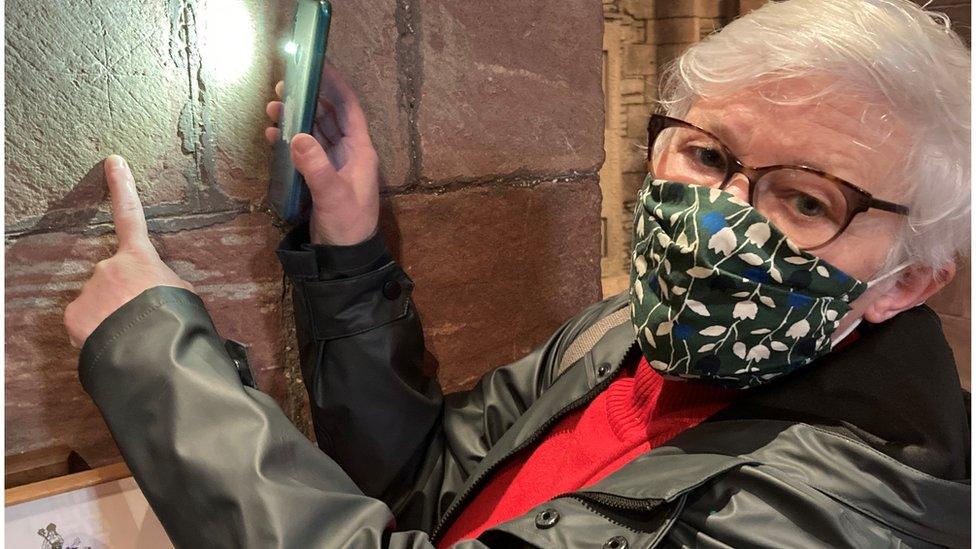
Volunteer graffiti hunter Melba Leonard was the first to record this mark on a pillar
A survey of St Magnus Cathedral in Kirkwall has recorded 600 separate graffiti marks.
They include symbols left by masons, a complex medieval charm, pencil marks made by wartime service personnel, and a hidden Blue Peter sticker.
Local tour guide Melba Leonard even discovered a mysterious palm-sized star.
The volunteer graffiti hunter told BBC Radio Orkney she had been excited to take part in the survey.

The mark Melba Leonard found is a star or asterisk scratched into the stone
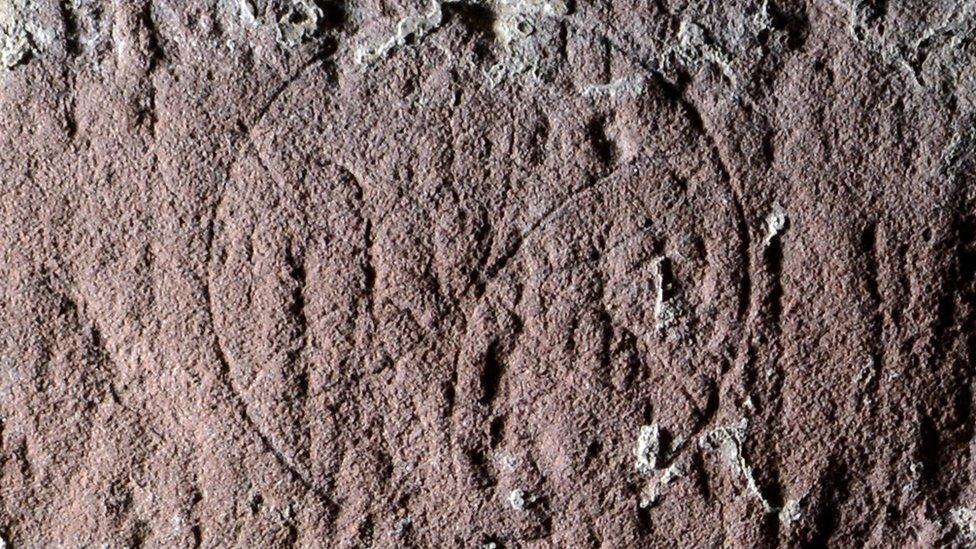
This circular pattern is known as a hexafoil because of its six petals
She had been hoping to find a cross made by the Vikings.
"When they went on pilgrimage, they would leave a vertical mark. If they came back, they would add the horizontal mark," she said.
"That's what I was looking for."
Instead, she found a star which has been described as a mystery by archaeologists.
She said it was "exciting" that the marks had been highlighted in a new guide to the cathedral, which dates back almost 900 years.
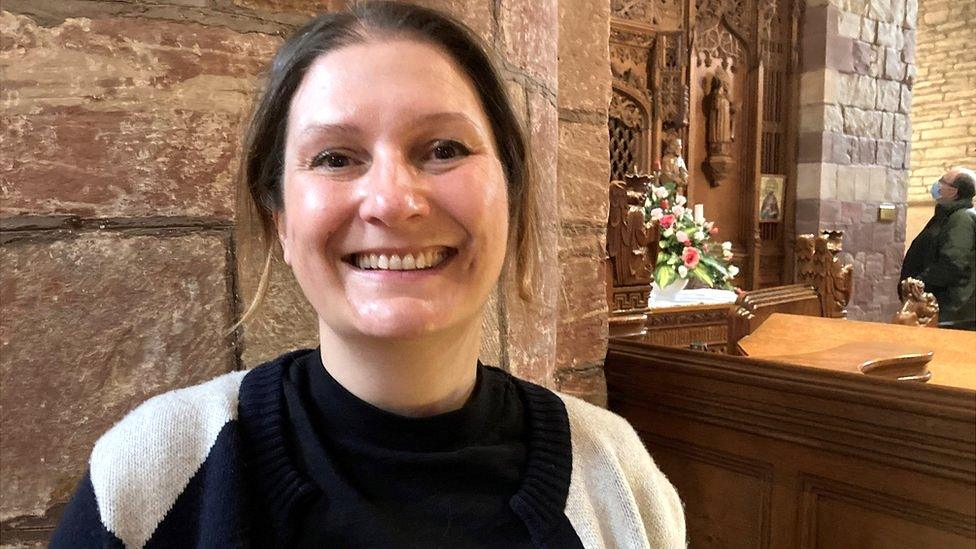
Dr Antonia Thomas says marks such as the hexafoil have been found in churches and homes in England and southern Scotland
It is possible the star may be the remnants of a ritual protection charm.
There is such a mark - known as a hexafoil, because it looks like a flower with six petals - carved into stonework near one of the grandest family tombs in the cathedral's nave.
Dr Antonia Thomas, from the Archaeology Institute at the University of the Highlands and Islands, said: "We find these sort of markings in all sorts of contexts, from the medieval and post-medieval period.
"Interestingly, we find them quite often in churches. Medieval graffiti surveys done in England and southern Scotland have found them. They're thought to be a ritual protection mark."
But not all the graffiti recorded by the volunteers is so ancient.

Weatherbeaters was a Blue Peter campaign run in 1983 to raise money for countries hit by droughts and floods
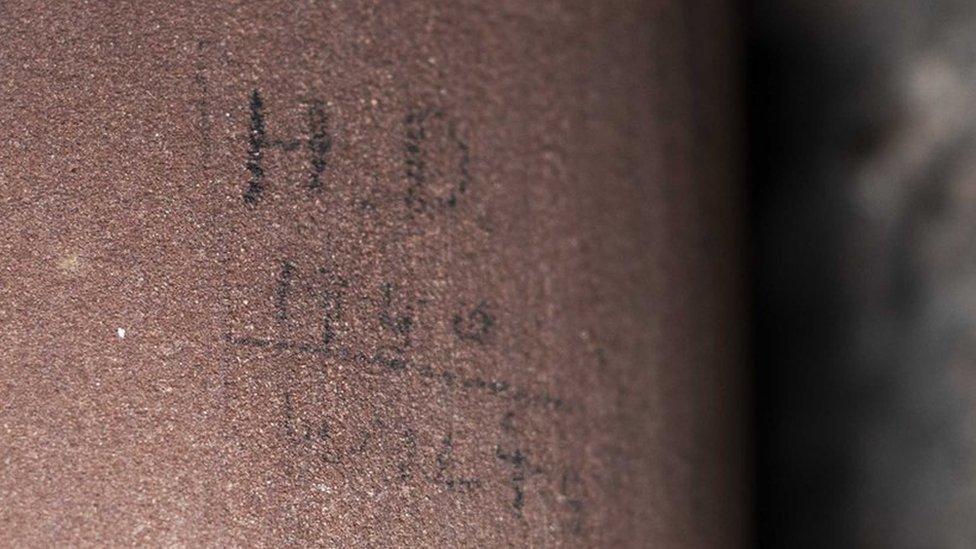
This pencil inscription may have been left by a member of the armed forces stationed in Orkney during World War Two
They also found a sticker from a 1983 Blue Peter fundraising campaign hidden in one of the Cathedral's choir stalls, as well as a pencil inscription reading HD 1940 Wilts.
This may have been left by someone from the armed forces serving in Orkney during World War Two.
Georgian and Victorian names, initials and dates have also been carved into stonework.
Hayley Green, secretary of the Orkney Archaeology Society, said the discoveries underlined the fact that the cathedral's story was the story of all those who had been in it.
"I particularly like the pencil marks of people who were here during the wars, which we haven't got fully recorded yet," she added.
There was one more, unexpected, discovery.
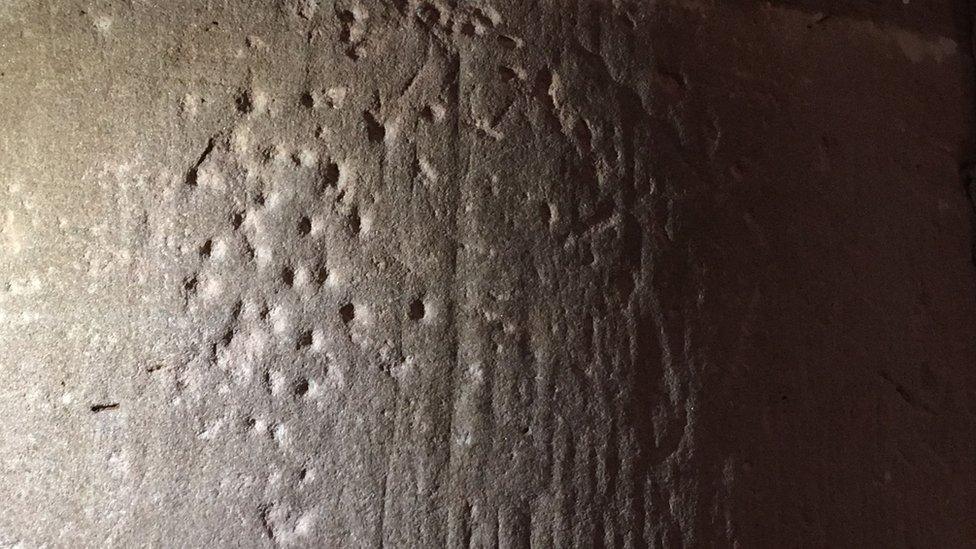
The peck marks are thought to have been made by pilgrims
Some of the pillars are pock-marked with shallow dents - as though someone has been hitting the stonework with something like the sharp point of a modern ice axe.
But these so-called peck marks are actually hundreds of years old.
They show where 12th Century pilgrims have hammered the sandstone to remove tiny samples of dust - perhaps as a souvenir, or possibly to mix with food or drink in the hope of benefiting from a miracle cure for their ailments.
Cathedral custodian Fran Flett Hollinrake said those marks were left by "ordinary people", unlike the "great and the good" who paid for the privilege to be buried in the cathedral and had a monument on the wall.
"Those tiny little marks were made by just anybody that came in, and we have so little material evidence of their lives that I find this stuff really precious," she added.
The project was run by Orkney Archaeology Society, with support from the Heritage Lottery Fund.
Related topics
- Published17 January 2019

- Published30 July 2017
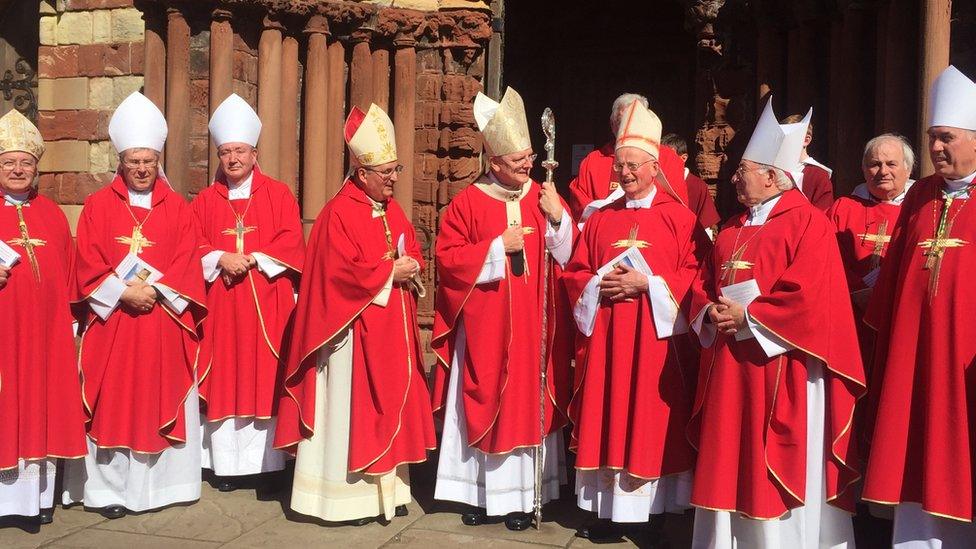
- Published8 February 2017

- Published20 July 2014
